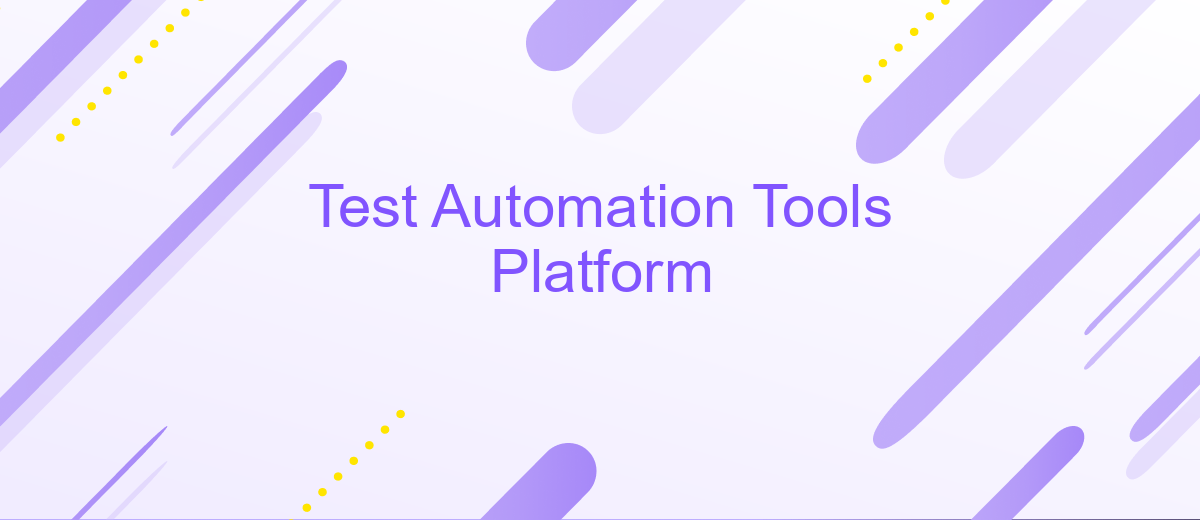Test Automation Tools Platform
In today's fast-paced software development landscape, test automation tools have become indispensable for ensuring quality and efficiency. The right platform can significantly reduce testing time, improve accuracy, and streamline workflows. This article explores the key features, benefits, and considerations when selecting a test automation tools platform, helping teams to enhance their testing processes and deliver robust software solutions with confidence.
Introduction to Test Automation and Platform Selection
Test automation has become an essential component in the software development lifecycle, enabling teams to enhance efficiency, accuracy, and speed. By automating repetitive and time-consuming tasks, testing teams can focus on more complex scenarios that require human insight. As the demand for high-quality software increases, selecting the right test automation platform is crucial for achieving optimal results and maintaining competitiveness.
- Compatibility with various testing frameworks and tools
- Ease of integration with existing development and CI/CD pipelines
- Scalability to accommodate growing project needs
- User-friendly interface and comprehensive support
- Cost-effectiveness and licensing flexibility
Choosing the appropriate test automation platform involves evaluating specific project requirements and team capabilities. It is vital to consider factors such as the types of applications being tested, the skills of the team members, and the overall testing strategy. By carefully assessing these elements, organizations can select a platform that not only meets their immediate needs but also supports long-term growth and innovation in their testing processes.
Key Features and Capabilities of Test Automation Platforms

Test automation platforms are essential for streamlining the software testing process, offering a range of key features designed to enhance efficiency and accuracy. One of the primary capabilities is the ability to support multiple testing frameworks and languages, allowing teams to work with their preferred tools and technologies. These platforms often include robust test management features, enabling users to organize, execute, and track test cases efficiently. Additionally, advanced reporting and analytics capabilities provide valuable insights into test results, helping teams identify trends and areas for improvement.
Integration capabilities are another critical aspect of test automation platforms, facilitating seamless interaction with various development and CI/CD tools. Services like ApiX-Drive can be instrumental in configuring these integrations, allowing for smooth data flow between different systems. Furthermore, these platforms often offer scalable test execution environments, supporting both local and cloud-based testing to accommodate varying project needs. With features like parallel test execution and reusable test scripts, test automation platforms significantly reduce testing time and effort, enabling faster delivery of high-quality software products.
Top Test Automation Platforms in the Market

In today's fast-paced software development landscape, choosing the right test automation platform is crucial for ensuring quality and efficiency. With a plethora of options available, it can be challenging to decide which platform best suits your needs. Here, we explore some of the top test automation platforms that have gained popularity in the market.
- Selenium: An open-source tool that supports multiple programming languages and browsers, making it a versatile choice for web application testing.
- Appium: Ideal for mobile application testing, Appium allows for cross-platform testing on both iOS and Android devices using a single codebase.
- TestComplete: Known for its robust features, TestComplete offers an easy-to-use interface and supports both web and desktop applications.
- Ranorex: A comprehensive tool that provides end-to-end testing solutions with a focus on usability and flexibility.
- Katalon Studio: A user-friendly platform that caters to both beginners and experts, offering a wide range of integrations and features.
Each of these platforms offers unique features and capabilities, catering to different testing needs and preferences. When selecting a test automation platform, consider factors such as project requirements, team expertise, and long-term scalability to make an informed decision.
Choosing the Right Platform for Your Needs

Choosing the right test automation platform is crucial for ensuring the efficiency and effectiveness of your testing processes. With a myriad of options available, it's essential to identify a platform that aligns with your specific needs and goals. Consider the types of applications you are testing, the skills of your team, and the integration capabilities with your existing tools.
Begin by evaluating the platform's compatibility with your tech stack and its ability to support the programming languages and frameworks your team uses. Scalability is another critical factor, as your testing needs may grow over time. Ensure the platform can handle increased workloads without compromising performance.
- Assess the ease of use and learning curve for your team.
- Check for robust reporting and analytics features.
- Look for a platform with strong community support and documentation.
- Consider the cost and whether it fits within your budget.
Ultimately, the right test automation platform should empower your team to deliver high-quality software efficiently. By carefully considering these factors, you can select a solution that not only meets your current requirements but also adapts to future challenges and opportunities.
- Automate the work of an online store or landing
- Empower through integration
- Don't spend money on programmers and integrators
- Save time by automating routine tasks
Future Trends in Test Automation Platforms
As the landscape of software development continues to evolve, test automation platforms are increasingly integrating artificial intelligence and machine learning to enhance their capabilities. These technologies are being used to predict potential failures, optimize test coverage, and automatically generate test cases. This shift towards AI-driven testing allows teams to focus on more complex and creative tasks, improving overall efficiency and reducing time to market.
Moreover, the trend towards seamless integration with various development tools and platforms is gaining momentum. Services like ApiX-Drive are making it easier to connect test automation tools with other applications, facilitating smoother workflows and data synchronization. This interoperability is crucial as organizations strive for continuous integration and delivery, ensuring that testing is an integral part of the development pipeline. As these trends continue to develop, test automation platforms will become more robust, adaptive, and integral to the software development lifecycle.
FAQ
What is Test Automation Tools Platform?
Why should I use a Test Automation Tools Platform?
What features should I look for in a Test Automation Tools Platform?
How can I integrate Test Automation Tools with other systems?
What are the benefits of integrating Test Automation Tools with other platforms?
Strive to take your business to the next level, achieve your goals faster and more efficiently? Apix-Drive is your reliable assistant for these tasks. An online service and application connector will help you automate key business processes and get rid of the routine. You and your employees will free up time for important core tasks. Try Apix-Drive features for free to see the effectiveness of the online connector for yourself.


